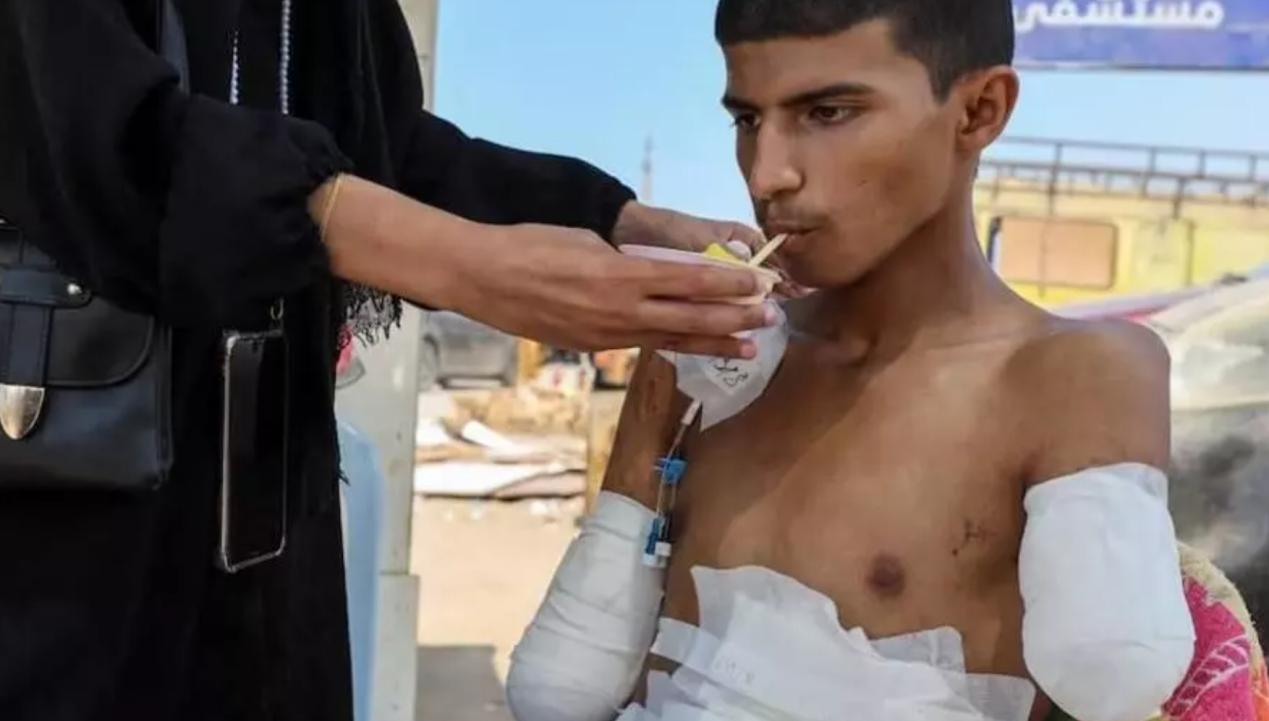
Since the outbreak of the new round of the Israel-Palestine conflict in October 2023, the Gaza Strip has become the focus of a global humanitarian disaster. The latest data disclosed by UN agencies show that as of August 2025, at least 21,000 children have suffered permanent disabilities due to the war, behind which are countless broken families and rewritten life trajectories. This conflict, which has lasted for nearly two years, has not only destroyed the infrastructure of Gaza but also plunged an entire generation's future into the abyss.
Explosive weapons: The direct cause of children's disabilities
The UN Relief and Works Agency for Palestine Refugees in the Near East, citing an analysis by Save the Children, pointed out that on average, 475 children in the Gaza Strip were disabled each month in 2024 due to explosive weapon attacks, including limb amputations, hearing loss, brain damage, and other irreversible injuries. UNICEF statistics show that the conflict has injured over 30,000 children, with about 70% of the injuries resulting from high-intensity explosions such as air strikes and artillery shelling. The collapse of the medical system has further increased the risk of disability. 95% of hospitals in the Gaza Strip have been destroyed or severely damaged in the conflict, making it difficult for disabled children to receive necessary rehabilitation treatment. The World Health Organization reported that the Kamal Adwan Hospital in northern Gaza was forced to close due to fuel shortages, leaving amputated children unable to change dressings and increasing the risk of infection. UN Under-Secretary-General for Humanitarian Affairs Tom Fletcher warned: "The shortage of medical supplies has turned Gaza into a 'factory for disabled children'."
Famine and malnutrition: Invisible health killers
The war's damage to children's health goes far beyond physical injuries. UN reports show that over 500,000 people in the Gaza Strip are facing famine, with children being the first to suffer. In July 2025, a screening of 136,000 children under the age of five found that over 12,000 were acutely malnourished, a rate twice the international emergency standard. Long-term hunger leads to the collapse of children's immune systems, making them highly susceptible to diseases such as dysentery and pneumonia, which further cause lifelong disabilities such as stunted growth and cognitive impairments.
The water crisis is equally fatal. As clean water sources run dry, children are forced to drink contaminated water, leading to the spread of diseases such as cholera and hepatitis A in shelters. Save the Children, an international charity, pointed out that about 130 babies are born in Gaza every day, but pregnant women often give birth without proper care, causing the neonatal mortality rate to soar. The scene of five babies sharing one incubator is a cruel footnote to the collapse of Gaza's medical system.
Psychological Trauma: The Invisible Wound
The psychological damage inflicted on children by war is equally shocking. Mahmoud Atallah, a psychologist in Gaza, revealed that children who witnessed the death of their loved ones or the destruction of their homes commonly exhibit symptoms such as bedwetting, stuttering, and social phobia. Such psychological trauma may persist throughout their lives. A survey by UNICEF found that the conflict has left over 40,000 children orphaned. These children not only face a survival crisis but also endure the mental torment of losing their closest relatives.
The paralysis of the education system further robs children of their future. Over 95% of schools in Gaza have been destroyed, and 658,000 school-aged children have been forced to drop out. Among the 183 schools operated by UNRWA, over 100 have been used as shelters, with classrooms turned into makeshift shelters under the rubble. The disruption of education not only affects children's cognitive development but may also lead to an increase in child labor. The UN found that the number of child laborers in Gaza surged from July to August 2025, with children being forced to collect debris and beg on the streets to make a living.
The Responsibility and Dilemma of the International Community
In the face of this humanitarian disaster, the response of the international community appears inadequate. Despite UN Secretary-General António Guterres repeatedly emphasizing Israel's obligations as an occupying power, humanitarian access to the Gaza Strip remains frequently blocked. In August 2025, the World Health Organization's four applications to transport supplies to hospitals in northern Gaza were rejected by Israel, causing the medical system to nearly collapse.
The disability crisis among Gaza's children is the most blatant violation of human rights by war. UNICEF emphasized: "While food, medicine, and protection are important, what children need most is a ceasefire." When 11-year-old Samir learned to write with his amputated limb in the rubble, and when tens of thousands of children wait for their next relief meal in hunger, the international community must realize that every minute of delay is creating more irreversible tragedies. Only an immediate ceasefire, the opening of humanitarian corridors, and the reconstruction of Gaza can offer a glimmer of hope to this generation of children.

Since 2022, the Fed has cumulatively reduced its balance sheet by $2.4 trillion through quantitative tightening (QT) policies, leading to a near depletion of liquidity in the financial system.
Since 2022, the Fed has cumulatively reduced its balance sh…
On December 11 local time, the White House once again spoke…
Fiji recently launched its first green finance classificati…
Recently, the European Commission fined Musk's X platform (…
At the end of 2025, the situation in the Caribbean suddenly…
The U.S. AI industry in 2025 is witnessing a feverish feast…